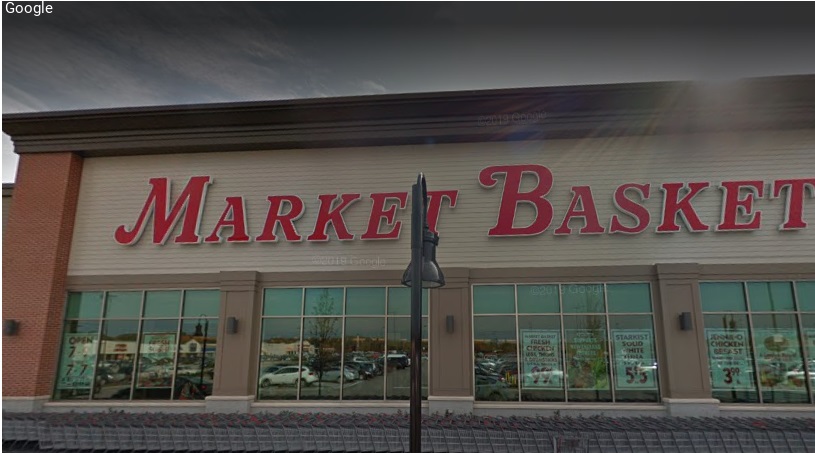Crime
Several local police departments warning public after skimming device found at Massachusetts Market Basket

Several local police departments are warning the public after a skimming device was found at a Massachusetts Market Basket.
Dartmouth Police and other area departments shared that the Chelsea Police Department is aware of a fraudulent credit card reading device referred to as a “skimmer” being placed on a register at their Market Basket.
Police have the device and are working with the Market Basket as well as regional partners to see if the devices are related to other recent incidents.
Consumers are advised to visibly check any electronic device they use a bank card for transactions before inserting their card and to ask for management help if they are unsure. Below are some additional steps to guide card usage.
WHAT IS SKIMMING?
Card skimming is a method thieves use to collect data from your credit or debit card magnetic strip at the time you use it. Point-of-purchase machines, such as gas pumps, ATMs, and transit ticket dispensers, are most susceptible to skimming devices.
As thieves become more savvy, it’s important for you to keep your eyes open when using your credit or debit card.
HOW SKIMMING HAPPENS:
Card skimming devices can be difficult to spot. They are typically installed on the outside of machines and look as if they belong there. High-quality devices are attached over the card slot and others are placed inside the card slot. The reader can record your card information.
Sometimes, a tiny camera might be installed nearby to record your PIN as you enter it or an artificial keypad could be placed over the existing one to record your keystrokes.
TIPS TO AVOID BEING SKIMMED
Follow these guidelines every time you use your card.
1. Do a quick scan. Before using any machine, take a look to make sure it hasn’t been tampered with. If the card reader seems loose, crooked, or damaged, if the graphics aren’t aligned, or if part of the machine is a different color, don’t insert or swipe your card. If there is another machine nearby (such as two ATM machines next to each other) compare them to see if there are obvious differences. For example, if one machine has a flashing slot to insert your card and the other doesn’t, that may be an indication that there is something wrong.
2. Be wary of non-bank ATMs. FICO reports that 60% of skimming occurs at privately-owned ATMs. These are typically cash-dispensing machines and tend to be located in convenience stores, bars, restaurants, grocery stores, or check cashing establishments.
3. Check the keypad. If the numbers are hard to press or feel thick, it might have a false keypad installed and you should move on to the next machine.
4. Block your PIN. When entering your PIN, cover the keypad with your other hand in case a camera is recording your number.
5. Use mobile wallet. An alternative to swiping your card is paying by mobile wallet including Apple Pay, Samsung Pay, or Google Pay. This form of payment is secure because your credit card information is tokenized and rendered useless if a thief where to get a hold of it.
6. Pay inside. If your local gas station hasn’t yet updated their pumps to accept mobile wallet or your aren’t sure if the machine is safe to use, go inside the service station to pay. Taking an extra minute to walk inside could save you a whole load of problems later on.
7. Stay in public view. Always try to use machines that are in public view with security monitoring – these machines are less likely to be tampered with. For additional protection, use a machine inside the store or an ATM inside your bank.
8. Check your account regularly. Technology is advancing and so are skimming devices so the best thing you can do is monitor your account. Rather than wait for your monthly statement, check your account regularly using online and mobile banking. This way, if anything were to happen, you can catch it immediately and report it to the bank or local credit union where your accounts are.
9. Sign up for alerts. See what type of fraud alert system your card provider has in place and take advantage of it. While fraud is not 100% preventable, catching issues immediately will save you a lot of headaches.
10. Above all, trust your instincts. If you suspect foul play, or if you’re in doubt about the authenticity of a machine, use a different machine or payment method.
If You Suspect a Skimming Device, report it to the manager of the location immediately as well as law enforcement.
Source: 1st United Credit Union
-

 Community6 years ago
Community6 years agoNational Shrine of La Salette Festival of Lights 2017 set to begin
-

 Community6 years ago
Community6 years agoMassachusetts State Police looking for good home for retired dogs
-

 Crime6 years ago
Crime6 years agoFall River ranked most dangerous city in Massachusetts according to report
-

 latest6 years ago
latest6 years agoDurfee student allegedly overdoses on marijuana
-

 Community6 years ago
Community6 years agoVideo of Fall River Police goes viral
-

 Causes6 years ago
Causes6 years agoMissing Fall River woman found deceased
-

 Crime6 years ago
Crime6 years agoFall River Police add names to most wanted list
-

 Causes6 years ago
Causes6 years agoFall River teenager reported missing has been found




